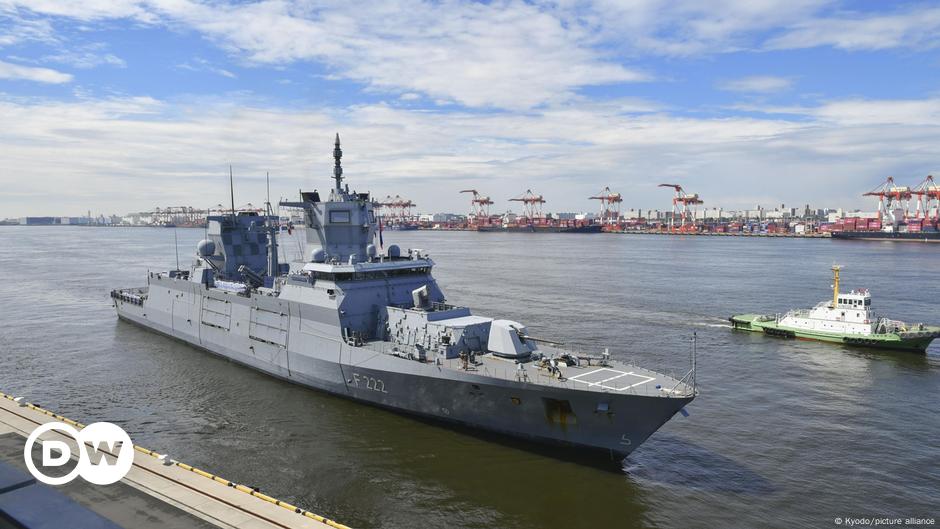Despite Chinese protests about the use of the waterway — which it claims jurisdiction over — German Defense Minister Boris Pistorius has insisted that the ships are in international waters.
A German warship and an accompanying navy vessel entered the Taiwan Strait on Friday, despite protests from China, which claims sovereignty over Taiwan and asserts influence over the body of water.
“International waters are international waters,” said German Defense Minister Boris Pistorius on Friday at a press conference with his Lithuanian counterpart Laurynas Kasciunas.
“It’s the shortest route and, given the weather conditions, the safest, so we’re going through.”
…
The use of the strait angers Beijing, but it is officially an international waterway and major trade route through which around half of global container ships pass.



What?!?!??
From UNCLOS:
Internal waters: Covers all water and waterways on the landward side of the baseline. The coastal state is free to set laws, regulate use, and use any resource. Foreign vessels have no right of passage within internal waters. A vessel in the high seas assumes jurisdiction under the internal laws of its flag state. Territorial sea: Up to 12 nautical miles (22 kilometres; 14 miles) from the baseline, the coastal state is free to set laws, regulate the use, and use any resource; in essence, the coastal State enjoys Sovereign rights and sovereign jurisdiction within its territorial sea. Vessels were given the right of innocent passage through any territorial sea, with strategic straits allowing the passage of military craft as transit passage, in that naval vessels are allowed to maintain postures that would be illegal in the territorial sea. “Innocent passage” is defined by the convention as passing through waters in an expeditious and continuous manner, which is not “prejudicial to the peace, good order or the security” of the coastal state. Fishing, polluting, weapons practice, and spying are not “innocent”, and submarines and other underwater vehicles are required to navigate on the surface and to show their flag. Nations can also temporarily suspend innocent passage in specific areas of their territorial sea, if doing so is essential for the protection of their security. Archipelagic waters: The convention set the definition of “Archipelagic States” in Part IV, which also defines how the state can draw its territorial borders. A baseline is drawn between the outermost points of the outermost islands, subject to these points being sufficiently close to one another. All waters inside this baseline are designated “Archipelagic Waters”. The state has sovereignty over these waters mostly to the extent it has over internal waters, but subject to existing rights including traditional fishing rights of immediately adjacent states.[18] Foreign vessels have right of innocent passage through archipelagic waters, but archipelagic states may limit innocent passage to designated sea lanes. Contiguous zone: Beyond the 12-nautical-mile (22 km) limit, there is a further 12 nautical miles (22 km) from the territorial sea baseline limit, the contiguous zone. Here a state can continue to enforce laws in four specific areas (customs, taxation, immigration, and pollution) if the infringement started or is about to occur within the state’s territory or territorial waters.[19] This makes the contiguous zone a hot pursuit area. Exclusive economic zones (EEZs): These extend 200 nmi (370 km; 230 mi) from the baseline. Within this area, the coastal nation has sole exploitation rights over all natural resources. In casual use, the term may include the territorial sea and even the continental shelf. The EEZs were introduced to halt the increasingly heated clashes over fishing rights, although oil was also becoming important. The success of an offshore oil platform in the Gulf of Mexico in 1947 was soon repeated elsewhere in the world, and by 1970 it was technically feasible to operate in waters 4,000 metres (13,000 ft) deep. Foreign nations have the freedom of navigation and overflight, subject to the regulation of the coastal states. Foreign states may also lay submarine pipes and cables. Continental shelf: The continental shelf is defined as the natural prolongation of the land territory to the continental margin’s outer edge, or 200 nautical miles (370 km) from the coastal state’s baseline, whichever is greater. A state’s continental shelf may exceed 200 nautical miles (370 km) until the natural prolongation ends. However, it may never exceed 350 nmi (650 km; 400 mi) from the baseline; nor may it exceed 100 nmi (190 km; 120 mi) beyond the 2,500 metres (8,200 ft) isobath (the line connecting the depth of 2 500 m). Coastal states have the right to harvest mineral and non-living material in the subsoil of their continental shelf, to the exclusion of others. Coastal states also have exclusive control over living resources “attached” to the continental shelf, but not to creatures living in the water column beyond the exclusive economic zone. The area outside these areas is referred to as the “high seas” or simply “the Area”.[20][21]
None of this contradicts anything I’ve said.
?!???!
It clearly details how territorial disputes and sovereignty are settled.
The section you’ve quoted explains what the rules are if there is no dispute. It does not explain how to resolve a dispute.